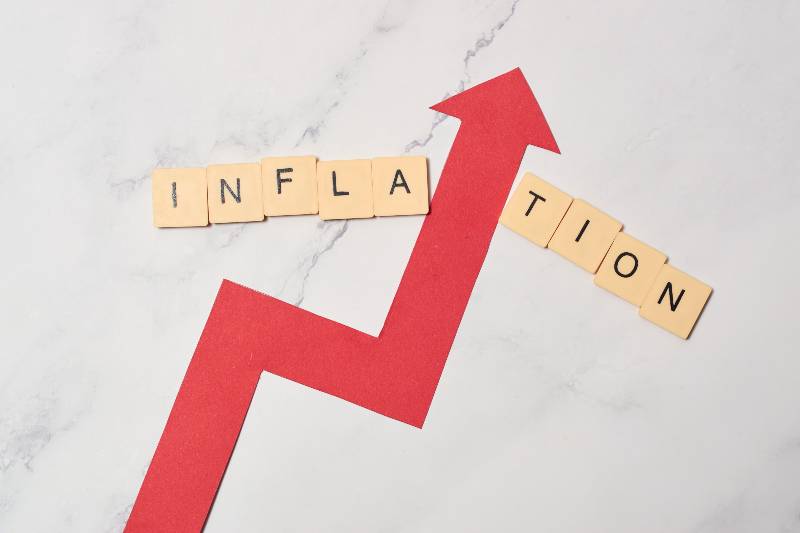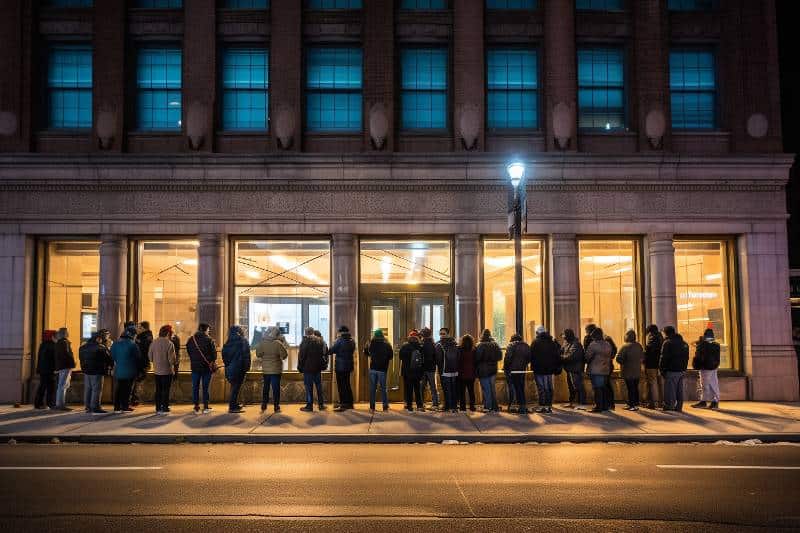As the world economies continue to unravel from the COVID-19 pandemic, it’s no surprise that commercial real estate investing is also being affected by the banking crisis. But what’s not so immediately obvious is how exactly this could affect investments in 2023 and beyond.
In this blog post, we examine the potential implications of a weakened banking market on commercial real estate investing over the coming years. We explore how banks are weathering these unprecedented storms and dive into potential opportunities for those with an eye for savvy investments. Read on to learn more!
The Mortgage Bankers Association recently reported that commercial real estate lending has seen a significant decline. In the first quarter of 2023, lending dropped by 56% compared to the same period last year. Additionally, there was a 42% decrease in loans from the previous quarter, indicating the impact of the current crisis.
Key Takeaways
- The 2023 banking crisis highlighted the importance of robust risk management in commercial real estate investing. Concerns about a commercial real estate crash have followed the collapse of Silicon Valley Bank and the regional banking crisis.
- The crisis underscored the necessity of understanding and adapting to changing market dynamics. Trends like the shift towards remote working have significant implications for commercial real estate demand.
- Despite the overall negative impact of the crisis, it also presented opportunities. Investors who were able to adapt, diversify their portfolios, and maintain liquidity could take advantage of distressed properties and emerging market trends.

What is the Banking Crisis of 2023?
The banking crisis of 2023 proved to be the most severe economic disturbance faced by the US and Europe since the 2007-2008 global financial crisis. It was initiated by the US Federal Reserve’s aggressive interest rate hikes which in turn caused a massive loss of government bonds held by US banks.
The recession incited panic among investors, sparking the withdrawal of funds and inciting liquidity issues for several banks. Fearful that mounting losses would cause bank failures, many feared for the industry’s stability. Sadly, these anxieties proved founded as four banks – Silicon Valley Bank, Signature Bank, First Republic Bank, and Credit Suisse – ultimately collapsed. The crisis underlined the vulnerability of the banking sector, particularly regarding the unanticipated effects of interest rate increases.
Background
The banking crisis of 2023 was a complex event that was the result of several factors, both economic and geopolitical. Here’s a brief background on the events leading up to it and how it unfolded:
Leading Events
On March 8th, just as the market was closing, Silicon Valley Bank released a press statement that sent shockwaves through the financial industry. The bank, struggling with a portfolio of bonds that was no longer sustainable, revealed that it would be taking a massive loss of $1.8 billion by selling off some of its own bonds.
This triggered a banking crisis, with other banks immediately reviewing their own portfolios and bracing for potential losses. It’s a stark reminder of just how quickly things can shift in the world of finance and how one company’s challenges can quickly become systemic problems for an entire industry.
The aim was to procure additional cash and flexibility for the company, but unforeseeably, it resulted in a significant decline in SVB’s stock price as investors became aware of the fragility of the bank’s balance sheet.
The bank’s depositors, most of whom were tech companies and venture capitalists, weren’t too far behind in catching up with the latest update. The majority of SVB’s deposits were found to have exceeded the $250,000 limit that FDIC covered, and understandably enough, many of the bank’s clients became uncomfortable with this development. As a result, several of them opted to retrieve their deposit, and in no time, things spiraled out of control. Within 48 hours of the press release being sent out on a Wednesday, regulators had shut down the bank.
Meanwhile, two banks supportive of cryptocurrencies began to experience difficulties.
Silvergate Bank’s parent company announced that it would undertake the liquidation of the La Jolla, California, bank in light of recent troubles. Silvergate had already been struggling with cryptocurrency companies pulling their deposits since the collapse of the FTX crypto exchange in 2020. All existing depositors will receive repayment, allowing for a swift resolution and minimal impact on the local community.
Signature Bank in New York had also been losing deposits during the “crypto winter,” and those outflows picked up when fears over SVB surfaced. Then, on a Sunday in March, regulators took over Signature.
At the Silicon Valley and Signature banks, regulations covered mostly uninsured deposits. However, due to underwater bonds, SVB faced challenging times. To ease the worries about contagion, the Federal Reserve initiated a new facility to assist banks dealing with similar issues. Although this move did somewhat mitigate their problems, the fact remains that it’s important to address banking concerns and take proactive measures to prevent potential risks.
On March thirteen to nineteen, Assigning blame for the bank failures began in week two of the crisis. Following a series of collapses, President Joe Biden came forward and addressed the nation on Monday, March 13, calling for depositors to stay reassured and for regulators to strengthen oversight of mismanaged banks. “Those responsible for the malpractice can and will be held accountable,” Biden said during a morning address, determined to protect consumers and ensure that the perpetrators are brought to justice.
Silicon Valley Bank’s tech-heavy neighbors, such as First Republic Bank, PacWest Bancorp, and Western Alliance Bancorp, have also been thrust into the market spotlight.
Things got really interesting when the Fed released $12 billion from its emergency funding facility, and Federal Home Loan Bank System advances swelled from $90 billion to $250 billion. But markets finally calmed down after the First Republic and Credit Suisse in Europe got some lifeline extensions.
New York Community Bancorp has acquired parts of Signature Bank’s unsuccessful business as commercial real estate joins the list of stressed-out sectors to keep an eye on. The week wraps up with these developments.
Let’s talk about the last couple of weeks. Around May 8-14, Federal Reserve Bank of New York President John Williams cautioned about the dangers of commercial real estate loans in the banking sector. Specifically, he brought up office buildings, which are facing increasing vacancy rates. Williams said that banks might not feel the impact right away, since it takes time to reprice real estate assets before they’re sold or refinanced.
The FDIC has proposed a new rule which puts the onus for replenishing the Deposit Insurance Fund largely on big banks. The proposed rule requires that uninsured deposits incur a special assessment fee, where banks with over $50 billion of assets will bear over 95% of the cost.
In a speech, Fed Gov. Michelle Bowman presented a counternarrative that contradicts the Fed’s self-assessment of what led to Silicon Valley Bank’s problems. She argued that any recent bank failures should not be the basis for stricter capital requirements.
Unfolding of the Crisis
- Burst of the Real Estate Bubble: Overleveraging in commercial real estate led to inflated property values. When these values started to correct, many investors found themselves overextended. This led to a surge in defaults and loan delinquencies that affected the balance sheets of many banks.
- Bank Failures: As loan defaults increased, several banks were unable to absorb the losses due to inadequate capital reserves. This led to the failure of several small to mid-sized banks, which further destabilized the banking sector.
- Withdrawal of Deposits: With the news of bank failures, many people began withdrawing their deposits, causing a run on the banks. This further depleted the banks’ reserves and led to liquidity issues, exacerbating the crisis.
- Intervention by Central Banks and Governments: Central banks around the world intervened to stem the crisis. They lowered interest rates and provided liquidity support to troubled banks. Governments also introduced fiscal measures to support the banking sector and stabilize the economy.
The impact of this crisis on commercial real estate investing has been significant. Many investors have faced losses due to the drop in property values and increased loan defaults. The crisis has also led to stricter regulations for banks and a general rethinking of risk management in commercial real estate investing.
Effects of Banking Crisis on Commercial Real Estate
The banking crisis of 2023 initially impacted commercial real estate significantly. The over-leveraged properties, when hit by the crisis, saw their values plummet. Banks, facing liquidity issues, became reluctant to offer loans, leading to a severe credit crunch. The lower availability of credit resulted in decreased buying activity, which further depressed property values. This vicious cycle had a ripple effect across the real estate sector.
Domino Effect on Different Aspects of Real Estate
- Transaction Volumes: The overall transaction volume of commercial real estate deals decreased significantly due to a lack of available credit and investor confidence.
- Construction and Development: The development of new commercial properties slowed as builders and developers struggled to secure financing and grappled with lower demand for space. This had a significant impact on the construction industry, with many projects delayed or canceled.
- Property Values: The value of commercial properties dropped considerably. This was exacerbated by decreased demand, increased vacancies, and lower rent payments as businesses struggled during the crisis.
- Rent and Occupancy Rates: Many businesses were unable to meet their rental obligations or chose to downsize their operations due to the economic downturn, leading to higher vacancy rates and lower rental income for property owners.
Impact on Investors
The effects of the banking crisis were particularly severe for commercial real estate investors. Many investors were left with properties that were worth less than their outstanding loans, leading to significant financial losses.
- Loss of Investment Value: Investors saw the value of their portfolios decline significantly as property values plummeted.
- Reduced Income: Many investors depend on rental income from their properties. With many businesses unable to pay rent, this income stream dried up for many investors.
- Difficulty Refinancing: Given the banking crisis, many investors found it challenging to refinance their properties as banks tightened their lending standards.
- Bankruptcies and Foreclosures: In some cases, investors were unable to meet their loan obligations, leading to bankruptcies and foreclosures. This further flooded the market with distressed properties, further reducing commercial real estate values.
The banking crisis of 2023 was a sobering reminder of the risks involved in commercial real estate investing and the importance of careful risk management. In the aftermath, many investors and institutions are likely to be more cautious and discerning in their real estate investments.
Lessons Learned
The banking crisis of 2023, and its impact on commercial real estate, has led to several important lessons for investors.
Mistakes
- Overleveraging: One of the major mistakes leading to the crisis was overleveraging. Investors, lured by low-interest rates and a booming market, borrowed heavily to finance their investments. When the market conditions changed, these investors were left in a vulnerable position.
- Inadequate Risk Management: Many investors did not adequately account for potential downside risks. They did not diversify their portfolios or hold sufficient reserves to cover potential losses.
- Ignoring Market Dynamics: Some investors failed to take into account changing market dynamics, such as the long-term impact of remote working on demand for office space.
Successes
- Robust Financial Planning: Investors who had robust financial plans were better able to weather the crisis. They had a diverse portfolio of properties, a balanced mix of debt and equity financing, and sufficient cash reserves to cover unexpected costs.
- Flexibility: Successful investors were flexible and quickly adapted to changing market conditions. For instance, some converted their office properties to co-working spaces or residential units in response to decreased demand for office space.
- Strategic Acquisitions: Despite the overall negative impact of the crisis, it also created opportunities. Savvy investors were able to acquire distressed properties at a discount, positioning themselves for potentially significant gains when the market recovers.
Lessons for Future Investors
- Balance Risk and Return: While commercial real estate can offer attractive returns, it’s crucial to balance this with risk. Overextending oneself can lead to severe consequences in a downturn.
- Diversify: Investors should diversify their portfolios across different types of properties and geographic regions to spread risk.
- Stay Informed: Investors need to stay informed about economic and market trends that could impact their investments. This includes changes in technology, societal trends, and regulatory policies.
- Maintain Liquidity: Maintaining sufficient liquidity is crucial to cover unexpected costs and take advantage of new investment opportunities.
- Adapt and Innovate: The most successful investors are those who can adapt to changing market conditions and innovate their business practices. For example, considering the trend towards remote work, investors could look at investing in residential real estate or co-working spaces instead of traditional office buildings.
The banking crisis of 2023 was a severe blow to commercial real estate investors. However, by learning from the mistakes and successes of this period, future investors can be better prepared for potential downturns and make more informed, resilient investment decisions.
Moving Forward
The first, and most optimistic scenario, is that these events prove to be isolated incidents. The problems are swiftly brought under control, confidence returns to markets, and the economy remains robust. Under this situation, the Federal Reserve would continue with its intended approach to maintaining tight rates throughout 2023, ensuring stability in the market and preventing any potential economic turmoil. This would not only benefit investors but also help foster growth and prosperity for the nation as a whole.
If banks become more risk-averse, financial conditions tend to decline. This can negatively impact economic growth through a fall in small bank lending which can cause slower business activity and lead to an increase in defaults. If these issues are not addressed on time, they can lead to more problems in the financial sector, impacting many areas of the economy. In response, the Fed may need to adopt a different course, such as reducing interest rates, in order to manage these negative developments effectively and stabilize the situation.
So the last scenario is a major banking crisis. The economy takes a hit and we’re in for a long recession. The Fed would have to cut interest rates pronto and make sure there’s enough money flowing through the financial system to avoid any risk of spreads.
Let’s examine the current state of the banking crisis recovery in 2023.
Current Recovery
- Government and Central Bank Interventions: The steps taken by central banks and governments to stabilize the banking sector have started to bear fruit. Lending has begun to pick up, although under more stringent risk management criteria.
- Adaptation and Innovation: Commercial real estate owners are innovating and adapting their properties to the changing market demands. For example, the office sector and retail spaces are being repurposed into mixed-use properties or converted to residential units, which have seen stable demand.
- Increased Interest in Certain Sectors: Despite the overall downturn, some sectors have shown resilience. Industrial real estate, particularly logistics, and warehousing, has remained strong due to the surge in e-commerce. Data centers are also in high demand due to the digital transformation trend.
Predictions and Opportunities for the Future
- Demand for Flexible Spaces: As more companies adopt a hybrid work model, there may be increased demand for flexible working spaces. Investing in properties that can accommodate such flexible arrangements could prove profitable.
- Investment in Emerging Sectors: As technology continues to evolve, new types of commercial real estate are emerging. Data centers, logistics facilities, and properties suitable for life sciences and tech companies could present lucrative investment opportunities.
- Sustainable Properties: There is an increasing focus on sustainability and ESG (Environmental, Social, and Governance) factors in real estate. Properties that are energy-efficient or have other “green” features are likely to be increasingly in demand.
- Distressed Assets: As a result of the banking crisis, there may be opportunities to acquire distressed assets at a discount. However, this requires careful due diligence and a sound understanding of the property’s potential for recovery.
- Technology Integration: Commercial properties that integrate technology to improve the tenant experience could have a competitive edge. This includes features like smart building technologies, high-speed internet, and health and safety technologies.
Moving forward, the future of commercial real estate investing lies in adaptability, understanding market trends, focusing on emerging sectors, and ensuring sound financial practices. Investors who can navigate these evolving dynamics stand to gain the most in the post-crisis world.

Banking Crisis Impact on Commercial Real Estate Investing FAQs
What was the banking crisis of 2023?
In March 2023, three small to medium-sized banks in the US failed within five days. This caused global bank stock prices to drop sharply and regulators responded quickly to prevent the possibility of the global financial crisis.
How did the banking crisis affect commercial real estate?
Due to the banking system crisis of 2023, the commercial real estate market was heavily affected. Loan defaults and over-leveraging caused property values to drop, while a credit crunch prevented new investments and developments. This resulted in investors experiencing losses due to reduced rental income and challenges in refinancing, ultimately causing a slowdown in the commercial real estate industry.
Were all real estate sectors equally affected?
No, not all sectors were affected equally. Industrial real estates, such as logistics and warehousing properties, remained relatively unaffected due to the surge in e-commerce demand. On the other hand, office and retail spaces saw a drop in value due to reduced occupancy rates.
If you’re eager to broaden your knowledge of industrial real estate, you’re in luck! I can highly recommend checking out my informative article on “Tech-Driven Strategies for Industrial Real Estate Management“. You’ll find a wealth of comprehensive insights and actionable advice that can help you stay ahead of the curve in today’s dynamic market.
Whether you’re a seasoned pro or just starting out, this piece is a must-read for anyone looking to optimize their real estate performance and maximize their returns. Don’t miss out on this valuable opportunity to up your game and excel in your field!
What mistakes did investors make during the banking crisis?
One of the biggest mistakes investors made during the banking crisis was over-leveraging or taking on too much commercial real estate debt. This placed a strain on cash flows, resulting in defaulted commercial real estate loans and reduced profit margins. Additionally, some investors failed to diversify their portfolios or diversify across different markets, creating an overly concentrated risk profile.
What were the successful strategies used by some investors?
Some of the successful strategies used by some investors during the banking crisis included investing in distressed assets, diversifying portfolios across markets and asset classes, focusing on emerging sectors, and embracing technology integration. All these strategies helped to mitigate losses and capitalize on opportunities as the market recovered.
Conclusion
In closing, it is clear that the commercial real estate crisis 2023 and its repercussions highlighted the need for a heightened level of risk management in commercial real estate investing. Asymmetric effects such as those seen in Silicon Valley Bank’s collapse or regional authority failures highlight the need to stay ahead and adjust strategies to remain on top of market conditions.
Despite the uncertain outlook during this tough period, investors with agility and innovation managed to take advantage of opportunities for growth.
Ultimately, if you wish to secure long-term success in commercial real estate investing, developing a reliable strategy that protects against present and future risks is essential. To build your ideal strategy, why not begin with a free consultation? I’m ready to answer your questions and guide you on your journey toward successful investments. Reach out today!




